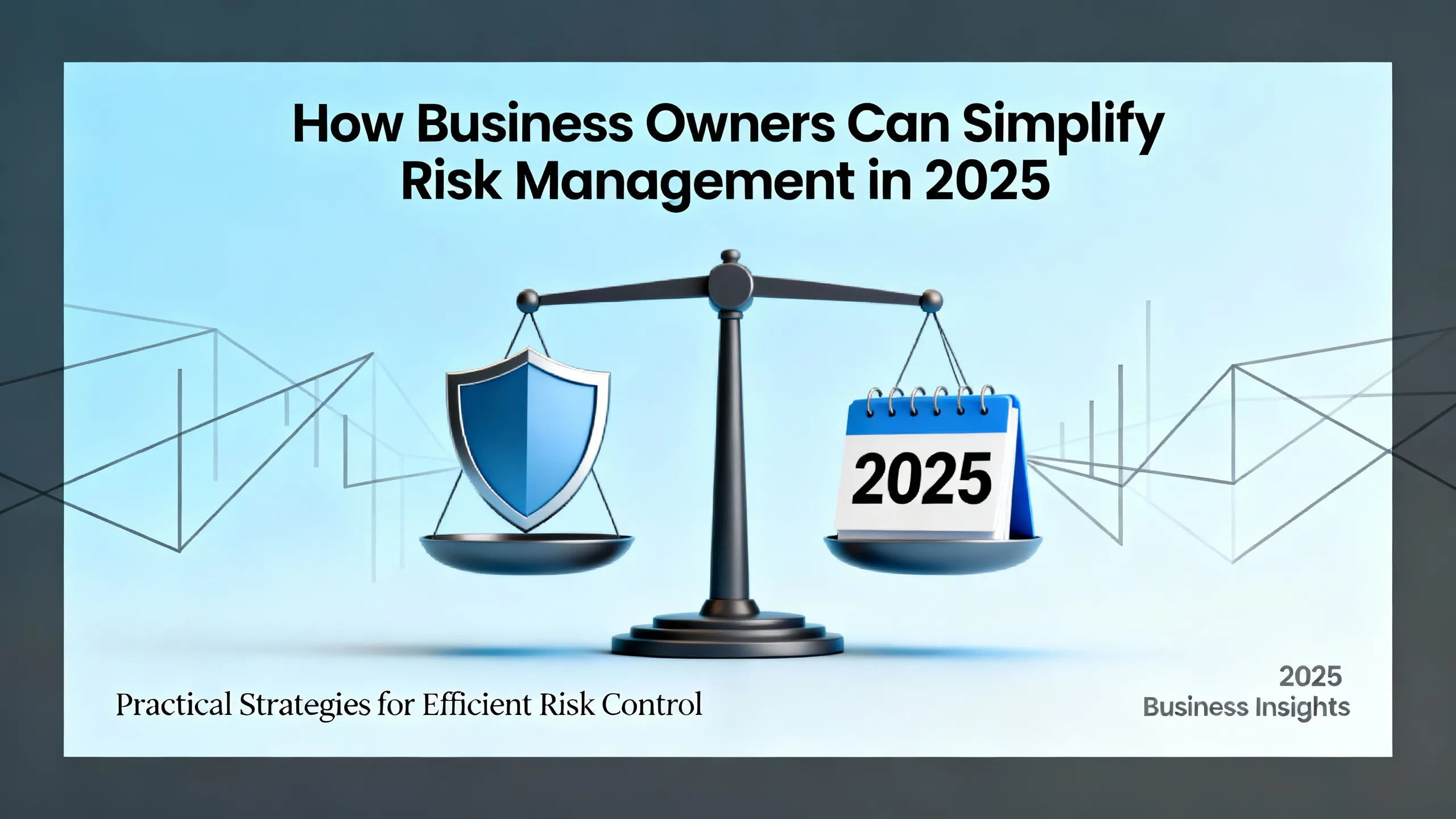How Business Owners Can Simplify Risk Management in 2025

Managing risks is a fundamental aspect of running a successful business, yet it often feels complicated and time-consuming. In 2025, business owners face a rapidly evolving landscape of risks, from cyber threats to supply chain disruptions, regulatory changes, and market volatility. Simplifying risk management isn’t just about reducing stress but about safeguarding your company’s future. Here’s a guide to help business owners streamline risk management while staying proactive.
Understanding the Modern Risk Landscape
The first step in simplifying risk management is understanding the types of risks your business faces today. Modern risks fall into several key categories:
- Operational risks: These include issues like equipment failures, employee errors, or disruptions in day-to-day processes.
- Financial risks: Fluctuations in revenue, unexpected expenses, or credit issues can affect your financial stability.
- Cybersecurity risks: With more businesses relying on digital operations, threats such as data breaches, ransomware, and phishing attacks are increasingly common.
- Regulatory and compliance risks: Changing laws and industry regulations can lead to fines or operational disruptions if not properly monitored.
- Market and strategic risks: Shifts in consumer behavior, competitor actions, or economic downturns can impact growth and profitability.
By identifying which of these risks are most relevant to your business, you can focus your efforts on managing what matters most instead of spreading resources too thin.
Streamline Risk Assessment
Risk assessment doesn’t have to be a complicated process. Start by creating a simple risk register: a table that lists potential risks, their likelihood, impact, and current mitigation strategies. You don’t need complex software; spreadsheets or cloud-based tools can suffice.
Prioritize risks based on their potential impact and probability. High-impact, high-probability risks deserve immediate attention, while low-impact, low-probability risks can be monitored periodically. This approach prevents business owners from becoming overwhelmed by trying to address every conceivable risk at once.
Leverage Technology for Efficiency
Digital tools can dramatically simplify risk management. Risk management software, cloud storage, automated compliance tracking, and cybersecurity tools can help business owners stay organized without constant manual oversight.
For instance, automated alerts for regulatory updates ensure your business remains compliant, while cybersecurity platforms can detect unusual activity in real time. By integrating these technologies into your operations, you reduce manual effort and enhance your ability to respond quickly to potential threats.
Outsource Expert Support
Risk management doesn’t have to be handled entirely in-house. Consulting with experts or outsourcing certain aspects of risk assessment can save time and ensure accuracy. The continuous threat monitoring and incident response required to mitigate cybersecurity risks are highly specialized. Many small to mid-sized organizations find it more efficient to utilize managed IT Security Services to handle firewalls, intrusion detection, and data protection 24/7.
Insurance providers, for example, often offer guidance beyond simply selling policies. Insurance by Next provides not only tailored business insurance options but also risk management resources designed to help business owners identify and mitigate threats effectively. Leveraging such support allows you to focus on running your business while ensuring expert oversight in areas that require specialized knowledge.
Standardize Policies and Procedures
Standardizing policies and procedures reduces uncertainty and ensures consistent risk management practices across your organization. Clear protocols for incident reporting, data protection, and operational procedures minimize mistakes and make it easier to respond effectively when risks arise.
Training your team on these standardized procedures is equally important. When everyone understands the steps to follow during potential incidents, your business can act quickly and efficiently, reducing the likelihood of small issues escalating into major problems.
Monitor and Review Regularly
Risk management is not a one-time task; it’s an ongoing process. Regularly reviewing your risk register, insurance coverage, and mitigation strategies allows you to adapt to changes in your business or industry.
Schedule quarterly or biannual reviews to assess emerging risks, adjust procedures, and ensure all insurance policies remain adequate. Monitoring trends and lessons learned from past incidents also strengthens your ability to prevent future problems, keeping your business resilient in a fast-changing environment.
Foster a Risk-Aware Culture
Simplifying risk management isn’t solely about processes and tools; it’s also about mindset. Encouraging a risk-aware culture within your organization empowers employees to identify and report potential issues proactively.
Regular communication about risks, clear guidance on reporting procedures, and recognition of proactive behaviors help embed risk awareness into everyday operations. When your team understands the importance of risk management, it becomes a shared responsibility rather than a burden on a single individual or department.
Closing Remarks
In 2025, business owners face a complex but manageable risk environment. By understanding the types of risks that affect your business, streamlining risk assessments, outsourcing expert support, and fostering a risk-aware culture, you can simplify risk management significantly.
